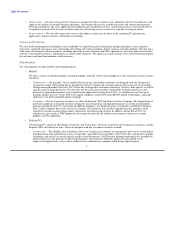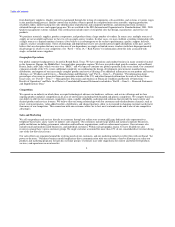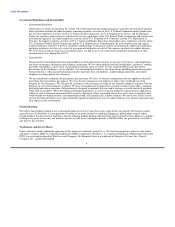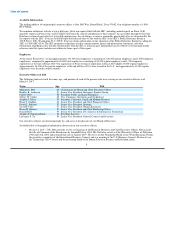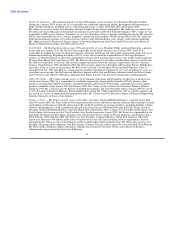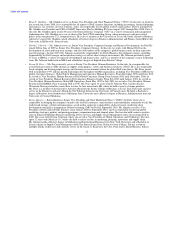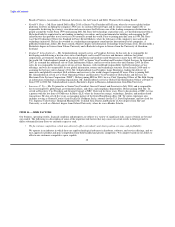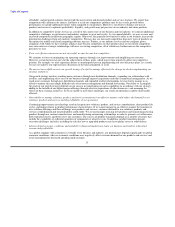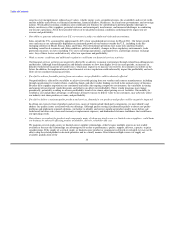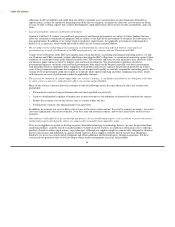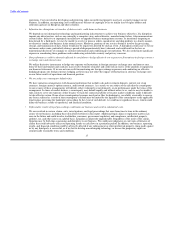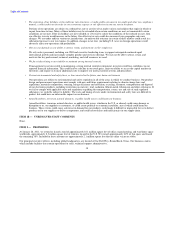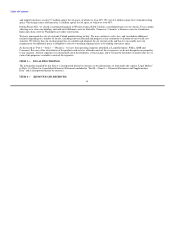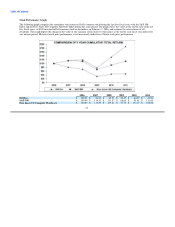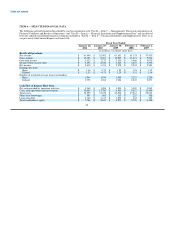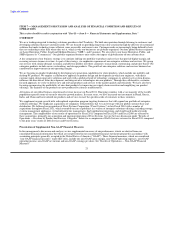Dell 2010 Annual Report Download - page 17
Download and view the complete annual report
Please find page 17 of the 2010 Dell annual report below. You can navigate through the pages in the report by either clicking on the pages listed below, or by using the keyword search tool below to find specific information within the annual report.
Table of Contents
affordable, and integrated solutions that provide the most current and desired product and services features. We expect that
competition will continue to be intense, and there is a risk our competitors' products may be less costly, provide better
performance or include additional features when compared to our products. Moreover, our efforts to balance our mix of
products and services to optimize profitability, liquidity, and growth may put pressure on our industry unit share position.
In addition to competitive factors we face as a result of the current state of our business and our industry, we confront additional
competitive challenges as our business and industry continue to grow and evolve. As we expand globally, we may see new and
increased competition in different geographic regions. Moreover, the generally low barriers to entry in our business increase the
potential for challenges from new industry competitors. We may also see increased competition from new types of products as
the options for mobile and cloud computing solutions increase. Further, as our industry evolves and our company grows,
companies with which we have strategic alliances may become competitors in other product areas or our current competitors
may enter into new strategic relationships with new or existing competitors, all of which may further increase the competitive
pressures we face.
• If our cost efficiency measures are not successful, we may become less competitive.
We continue to focus on minimizing our operating expenses through cost improvements and simplifying our structure.
However, certain factors may prevent the achievement of these goals, which may in turn negatively affect our competitive
position. For example, we may experience delays or unanticipated costs in implementing our cost efficiency plans. As a result,
we may not achieve our expected cost efficiencies in the time anticipated, or at all.
• We may not successfully execute our growth strategy if we fail to manage effectively the change involved in implementing our
strategic initiatives.
Our growth strategy involves reaching more customers through new distribution channels, expanding our relationships with
resellers, and augmenting select areas of our business through targeted acquisitions and other commercial arrangements. As we
reach more customers through new distribution channels and expanded reseller relationships, we may fail to manage in an
effective manner the increasingly difficult tasks of inventory management and demand forecasting. Our ability to accomplish
the goals of our growth strategy depends on our success in transitioning our sales capabilities in accordance with our strategy,
adding to the breadth of our higher margin offerings through selective acquisitions of other businesses, and managing the
effects of these strategic initiatives. If we are unable to meet these challenges, our results of operations could be unfavorably
affected.
• Our inability to manage solutions, product, and services transitions in an effective manner could reduce the demand for our
solutions, products and services and the profitability of our operations.
Continuing improvements in technology result in frequent new solutions, product, and services introductions, short product life
cycles, and improvements in product performance characteristics. If we cannot manage in an effective manner the transition to
new solutions offerings and these offerings' new products and services, customer demand for our solutions, products and
services could diminish and our profitability could suffer. We are increasingly sourcing new products and transitioning existing
products through our contract manufacturers and manufacturing outsourcing relationships in order to generate cost efficiencies,
deliver products faster, and better serve our customers. The success of product transitions depends on a number of factors that
include the availability of sufficient quantities of components at attractive costs. In addition, product transitions present
execution challenges and risks, including the risk that new or upgraded products may have quality issues or other defects.
• Adverse global economic conditions and instability in financial markets may harm our business and result in reduced net
revenue and profitability.
As a global company with customers in virtually every business and industry, our performance depends significantly on global
economic conditions. Adverse economic conditions may negatively affect customer demand for our products and services and
result in postponed or decreased spending amid customer
13



